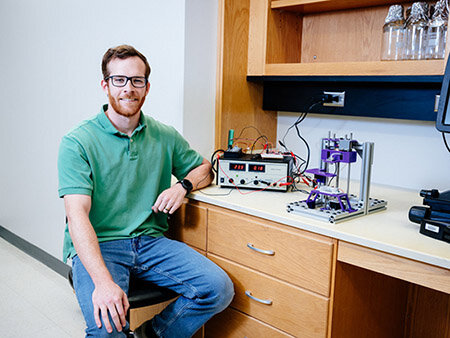Novel bioprinter shows potential to speed tissue engineering
Date: 6.12.2019
The dream of tissue engineering is a computer-controlled manufacturing of complex and functional human tissue for potential organ regeneration or replacement.
University of Alabam a at Birmingham biomedical researchers have found a way to speed that tissue creation using a novel bioprinter built for $2,000, they report in the journal Micromachines. Building blocks for the tissue are pregrown spheroids of human induced-pluripotent stem cells that contain 200,000 cells per spheroid.
a at Birmingham biomedical researchers have found a way to speed that tissue creation using a novel bioprinter built for $2,000, they report in the journal Micromachines. Building blocks for the tissue are pregrown spheroids of human induced-pluripotent stem cells that contain 200,000 cells per spheroid.
The first commercial bioprinter from Japan builds tissue one spheroid at a time, placing the spheroids on metal pins that can be removed after the growing cells expand and fuse into tissue. The UAB approach could increase the efficiency of that scaffold-free bioprinting by as much as a hundred-fold.
The key? The UAB proof-of-concept bioprinter picks up multiple spheroids at the same time and places them simultaneously on a matrix of pins.The machine, about the size of a toaster, fits easily in a biosafety hood and its parts can be sterilized by autoclave or ethylene oxide.
"This novel, layer-by-layer scaffold-free bioprinter is efficient and precise in operation, and it can easily be scaled to print large tissues," said Jianyi "Jay" Zhang, M.D., Ph.D., who led the research and is corresponding author. "Having the ability to build larger, more clinically relevant tissues in a shorter length of time using this method would be very beneficial for various fields of medicine and clinical research."























